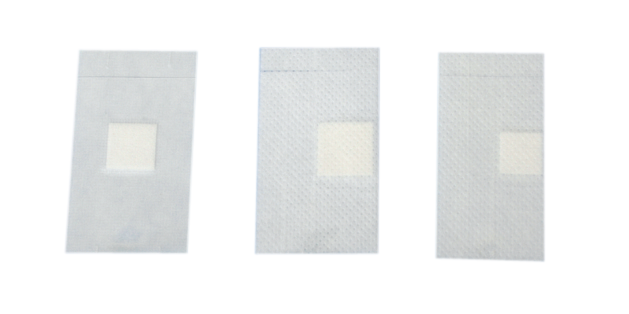
Infusion Plaster
Infusion Plasters have been around for a while, but they’re not something that you see in the mainstream. They are typically used in hospital settings and are used to maintain hydration by delivering a liquid into the body - helping patients to stay nourished during sickness or recovery.
It consists of cloth(PE film), medical hypo-allergenic adhesive and absorbent pad.
Performance and Characteristic:
Range of Apply:
Infusion plasters are small, adhesive patches that are placed on the skin to deliver a continuous flow of hydration. The patches are made of a flexible, breathable material that is infused with a hydrating solution. The solution is slowly released into the skin over the course of several hours, providing a steady stream of hydration. There are many benefits to using infusion plasters, including:
- Reduced dehydration
- Improved skin elasticity
- Increased skin hydration
- Reduced wrinkles and fine lines
- Smoother, more youthful-looking skin
If you're looking for a new way to stay hydrated, try using an infusion plaster! Here's how:
1. Start by cleansing the area of skin where you'll be applying the plaster. This will help ensure that the plaster adheres properly.
2. Cut the plaster to size, if necessary.
3. Remove the backing from the plaster and apply it to the skin.
4. Once in place, add water to the reservoir on top of the plaster. The amount of water you'll need will depend on the size of the plaster and how long you want it to last.
5. Allow the water to infuse into the plaster for at least 15 minutes before removing it.
An infusion plaster is a thin, flexible patch that is infused with a variety of nutrients and vitamins. The ingredients in an infusion plaster are designed to provide the body with a slow, steady release of these nutrients over a period of time. The exact ingredients in an infusion plaster will vary depending on the brand and formula. However, some of the most common ingredients include vitamin C, vitamin B12, folic acid, and iron. These nutrients are essential for many different functions in the body, including energy production, cell regeneration, and red blood cell production. Infusion plasters are typically applied to the skin on the inside of the wrist or behind the ear. The patches are usually worn for 8-12 hours before being replaced.
When it comes to staying hydrated, there are a lot of different options out there. But which one is right for you? If you're looking for a new way to stay hydrated, you may want to try an infusion plaster. Infusion plasters are a new type of product that allows you to infuse your body with water through your skin. There are many benefits to using infusion plasters, including the fact that they're easy to use and they're a great way to get your body the hydration it needs. If you're interested in trying an infusion plaster, be sure to talk to your doctor first to make sure it's right for you. Once you've decided that an infusion plaster is right for you, follow the instructions on the package carefully. Infusion plasters are a great way to stay hydrated, but be sure to use them correctly in order to get the most out of them!
When it comes to skincare, there are a lot of products on the market that claim to be able to hydrate the skin. Infusion plasters are one of the latest products to hit the market, and they claim to be able to provide long-lasting hydration by infusing the skin with moisture. But what are infusion plasters? And do they really work? Infusion plasters are essentially stickers that you apply to your skin. They contain hyaluronic acid, which is a substance that naturally occurs in the body and is responsible for keeping the skin hydrated. Once applied, the hyaluronic acid in the plaster will work to attract and retain water in the skin, resulting in more hydrated and plumper skin. There are also added ingredients in some formulations that can help to soothe and protect the skin, such as aloe vera and chamomile. So, do infusion plasters really work? The short answer is yes! These plasters can definitely help to boost hydration levels in the skin and make it look and feel more plump and radiant. However, it's important to note that they're not a miracle cure-all for dry skin; if you have very dry or dehydrated skin, it's still important to use other hydrating products in conjunction with these plasters.